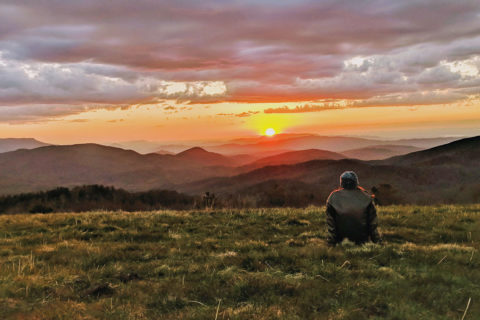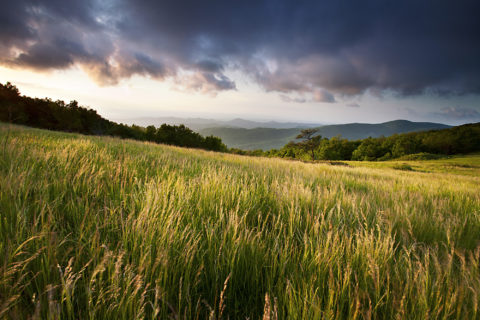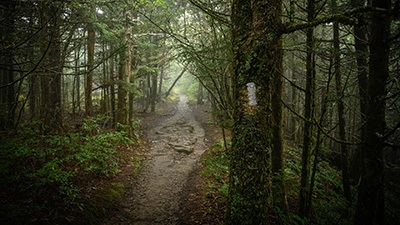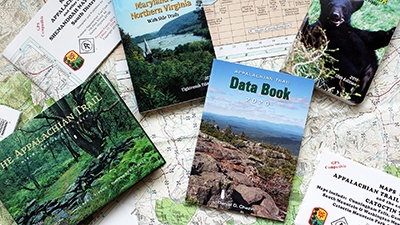Bob Cummings
Volunteer

Stalwart Appalachian Trail supporter, thru-hiker, journalist, and conservationist Robert C. (Bob) Cummings died at his beloved home in Phippsburg, Maine, in January. He was 86.
Bob was twice nominated for a Pulitzer Prize in journalism for discovering and publicizing that more than 400,000 acres of public land in Maine—set aside when the state was founded—had been “lost.”
In Maine’s 1820 constitution, “Public Lots” were defined as one-twentieth of each township (1,000 acres on average) and were set aside to be used eventually for municipal buildings, schools, and churches. However, by 1970, ten million acres had never been settled in western and northern Maine, those lots were never accessible or available as public lands, and the “timber and grass rights” of the unincorporated townships were sold.
In Cummings obituary (which he wrote himself), he reflected, “Most found the idea that the state could misplace 400,000 acres of land absurd. My editors and most readers treated the story as almost a joke. None of the major environmental groups paid any attention. My role was to keep the story alive until the legal and political processes could take notice and respond.” With more than two dozen stories published in newspapers, Bob succeeded in galvanizing public support and the attention of the legislature. The Maine Supreme Court ruled that the public lots did, indeed, belong to the people of Maine. There followed a complex process of consolidating 450,000 acres of land under the newly created Bureau of Public Lands.
In 1971—as a greenhorn, 20-something conservation staffer for the Appalachian Mountain Club—I got to know Bob as a colleague, friend, and mentor. We both attended hearings of the Maine Land Use Regulation Commission and other regulatory and legislative bodies. He always had a breast-pocket full of #2 lead pencils without erasers, his right forefinger black with graphite, constantly jotting on plain, unlined, yellow paper on a clipboard as some timber industry lawyer droned on for 20 minutes. The words looked like scribbling to me, and I once asked, “Bob, how can you read that?” He smiled and said, “I can’t. But the LURC and the timber lawyers know that I know exactly what they said.”
In the early 70s, working with AMC, I unsuccessfully asked the Brown Paper Company about protecting the Mahoosuc Mountain range to commemorate AMC’s centennial anniversary in 1976. Later, thanks to Bob’s coaching, I asked Maine’s Bureau of State Parks (now Bureau of Parks and Lands) if we could consolidate trade lands to protect the Mahoosucs. Due to poor timber values on the A.T. ridgecrest, the timber companies concurred, trading more than two acres of ridgecrest for each acre of valley-bottom lands more suitable for timbering.
In 1977, the Maine Legislature and Governor approved the acquisition by land-trades of approximately 21,000 acres of the Maine portion of the Mahoosucs with two paper companies. Today, the Mahoosuc Public Reserved Lands total more than 40,000 acres (see a map of those lands here).
Other A.T. lands authorized by public trades include holdings near Sabbathday Pond and the Bigelow Mountain Preserve, where Maine’s citizens mandated acquisition by statewide public referendum.
In 1993, bored with retirement, Bob announced he was going to Georgia and walking home. He arrived on the summit of Springer Mountain in Georgia on April 15 that year and climbed Katahdin October 16.
Bob was a Trail maintainer, officer, and newsletter editor for the Maine A.T. Club. In June 2002, he joined with others to found the Maine Appalachian Trail Land Trust. He became the Trust’s second president and longstanding director (see Conservation Champion Bob Cummings Passes Away).
For his distinguished contributions to the Appalachian Trail project, Bob was named an Honorary Member at ATC’s 2005 biennial meeting.
Long live the example and vision, and our memories, of this ardent conservationist and wonderful outdoorsman, Robert C. Cummings!
—Bob Proudman





